People who grow marijuana need to take care about a lot of things. First off, they need to ensure that they are using the right kind of equipment for their plants. They must also make sure that they are complying with the laws. Then there’s the financial calculations to be done and budgets to be made. One more thing that has to be considered by growers is about protecting their plants while they grow them! This is something which bothers the outdoor growers more, but indoor growers too must take precaution about the same. One of the most common problems that we have seen in marijuana plants is that sometimes we see rust spots on leaves during flowering. This can scare new growers but old-timers know exactly what to do!
In this article, we shall be taking a closer look at what to do if you see rust spots on leaves during the flowering phase of your marijuana plant’s growth cycle. We shall be taking a closer look at possible causes and their treatments. We have also included a guide on how to stay free from pests in this article so that you can safeguard your plants in a better manner. However, rust spots on leaves can sometimes occur due to nutrient-related issues as well! We also look at that possibility in detail. Towards the end, we answer some frequently asked questions before we conclude.
We hope that by the time you reach the end of this article, you will be fully prepared to tackle any similar problems that might happen with your plants. Let us now begin with the basics:
How Do Rust Spots on Leaves Look Like?
When growing plants, you will notice that some plants naturally get certain spots and specs which are not harmful. However, under ideal circumstances, none of them should be there. In most cases, they are not much of a bother. However, some spots clearly look like something’s wrong and that your plant might be diseased. Rust spots are one of these spots. One look at them and you know that they are not supposed to be there and that something is clearly not right. Rust spots are generally surface-level spots but if not treated they might even end up becoming dry and crumbly, causing a tiny puncture in the middle of your leaf. These spots are easily identifiable on healthy leaves as they stand out as dark patches in an otherwise green leaf.
Rust patches are an alarm sign and you must get into action immediately to ensure that you fix whatever is wrong with your plant. The problem with rust spots on leaves during flowering is that you do not know the exact reason by just looking at the spots. You need to further investigate into your plant – often a trial and error method to come to a conclusion about what is causing these spots to appear. Let us now consider some possible causes of rust spots:
Possible Causes of Rust Spots on Leaves During Flowering
Now that you know how rust spots look like, you must also know the reasons as to why they appear on your leaves. Here are five of the most common reasons as to why rust spots occur:
- Pests
The most common reason for rust spots is pests. Not just rust spots, any sort of unexpected or unwanted spots appearing on the body of your plant can be explained by the existence of pests in the plant. This is a problem more commonly associated with outdoor growers, but indoor growers can also get affected if you bring an infected plant indoors as pests can spread from plant to plant. Pests such as aphids, etc. can cause quite a lot of damage and can cause spots and tiny puncture holes to appear on your leaves. They move from branch to branch and plant to plant, and breed in large numbers – and hence need to be treated as soon as you find out they’re there. Pests are identifiable when you observe your plants closely they will be moving about in large numbers. You can usually get rid of them using soap solutions or neem oil.
- Rust Fungs
Rust fungus is another very common reason as to why brown spots appear on your plants. This is something that can be quite common in some regions, be on a lookout for this if there’s already a rust fungus outbreak in your area. The best way to differentiate between rust fungus infection spots and any other infection is that when you rub your fingers on the brown spots, some of it will stick on to your fingers. Rust mold is something that is quite common in some regions during the flowering phase and is a very probable culprit for the rust spots appearing on your leaves during flowering. This might especially be the case with your plants if you are in a high humidity region where the temperature ranges between 60-80F on an average.
Furthermore, this is a very indoor problem too because fungus tends to thrive where humidity is high and there is a lack of ventilation and lack of proper air supply. If you have a proper ventilation mechanism set up and allow the air to move through, fungi can’t hold on. You might also want to ensure that there’s a proper distance between your plants and the temperatures are on the colder side. Doing all of this will stop the fungi from growing further while you treat and remove it from the existing plants. It is best advised to remove the infected leaves because it might spread on to other parts from them. The sulfur spray is also quite beneficial here.
- Magnesium or Calcium Deficiency
If it is not due to fungi, the next probable cause is there is some sort of a nutrient deficit. Excess or less of nutrients in the plants can result in such brown rusty spots appearing on the leaves, especially during the flowering phase. It is usually the lack of magnesium due to which such a thing usually tends to happen – but in some cases, it can also be the lack of calcium which leads to rusty spots. If it is due to nutrients it will continue to get worse as the flowering progresses as flowers need a lot of nutrients and the leaves will not get it.
If you have ruled out the possibility of fungus and pests, you should try and add some magnesium and calcium to your plants. Usually, doing so would start fixing the issue within 3 to 4 days. However, when it comes to nutrients – the lack, as well as excess of them can result in such a problem. Sometimes there can be a nutrient lockout – which happens when for some reason, your plants are not able to absorb a particular nutrient or all nutrients! This can be treated by flushing the soil and clearing it of all nutrients by providing it with excess water and draining out all the nutrients off the soil. Soil pH also needs to be kept in mind – it must be around 6.8 which is ideal for your plants to get all the nutrients. Let us now take a closer look at a nutrient burn and see what happens when there is an excess of Magnesium or Calcium in your plant:
- Nutrient Burns
A nutrient burn happens when the plant has stored way too much of a nutrient and it can’t handle it anymore. These are very easily identifiable in the form of rust spots which somewhat make it look like your plant has got chickenpox. If it is not a nutrient deficiency, then there are chances that what is happening to your plants is because of an excess of nutrients. These nutrient burns can be treated using something known as ‘flushing’ the plant (not the soil in this case) – a method that will make sure that all the extra nutrients are wiped clean from the plant. In flushing, you provide just plain water to your plants which will make sure that all the stored nutrients are used up, and then you can begin your usual dose once again. In this process, you will see that some of the existing rust spots are being healed as the nutrients are being used up by plants while the new ones will no longer occur.
- Light/Heat Burns
Lastly, if these are not related to any of the aforementioned causes they might be light or heat burns. Though these burns usually do not happen in the form of spots, you can identify them if your leaves are getting curled up at the edges and are getting darker in those regions. If such a thing is happening then your plants are facing light or heat burns and you might want to move your lights a little farther away from them. In this list, these are the least dangerous type of a problem as they can be fixed by simply moving the light or ensuring the grow area remains cool.
Who is at a Greater Risk? Indoor Growers or Outdoor Growers?
When it comes to the topic of rust spots, both indoor as well as outdoor growers are at an equal risk. If it is a pest-related issue, then outdoor growers are at a greater risk. However, it can happen to indoor growers too if an infested plant enters their grow room. When you look a the rust fungus, it will largely affect indoor growers who do not have a proper ventilation system or a room which is very humid. However, in many cases, it has been observed to happen to outdoor growers too. Fungus thrives in places with no proper airflow and high humidity and hot temperatures.
Nutrient related issues – be it the lack of nutrition or excess of it, can happen to indoor as well as outdoor growers equally. If you are not careful while watering your plants and end up providing too much or too little of nutrition to them, this is one major issue that you are going to face. Hence when it comes to rust spots on leaves during flowering, indoor, as well as outdoor growers, are at pretty much the same level of risk.
Frequently Asked Questions About Rust Spots
Here are the answers to some of the most common questions about rust spots on your plant’s leaves:
1. Why Do These Spots Generally Tend to Appear During the Flowering Phase?
These spots can occur during different phases but are most commonly found during the flowering phase. This is because it is at this time that your plants are at their most vulnerable as all the energy is going towards developing and enlarging the flowers which are blooming. Hence, other portions remain vulnerable and lesser resources also go to them, thereby making them easy targets.
2. Are indoor growers at a greater risk than outdoor growers?
As already discussed above, indoor, as well as outdoor growers, are pretty much at an equal risk. All four of the possible causes of rust spot are possible for indoor as well as outdoor growers. You need to keep an eye out for early signs and treat it as soon as you see it!
3. What is the ideal pH level for plants to absorb nutrients properly?
It is essential for growers to balance the soil pH. It should be made stable at 6.8 so that your plants are getting the maximum possible benefit of the nutrition your are providing to the soil.
Conclusion
We know that growers take a lot of time and effort in growing their plants and everyone wants to reap the fruits (or flowers) of their effort. However, something like these rust spots on leaves can tend to be quite a killjoy – and might end up spreading all over the plant and hamper months of your hard work in a matter of weeks! We hope that this article has helped you understand the cause as well as the cure – how do these rust spots occur and how can you ensure that they do not stay around for longer! If there are still any questions about it, feel free to mail us or drop a comment in this article and we shall get back to you with the answers! Till then…
…Happy Growing! 🙂
Table of Contents



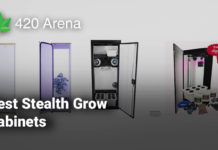
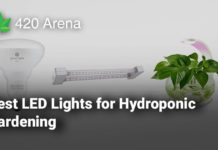




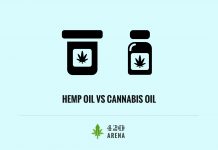






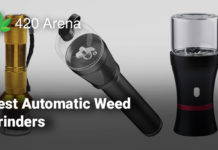
![How to Use Carbon Filters in Your Grow Room [7 Best Carbon Filters for Grow Rooms in 2021] How to Use Carbon Filters in Your Grow Room](https://420arena.com/wp-content/uploads/2020/12/How-to-Use-Carbon-Filters-in-Your-Grow-Room-218x150.jpg)





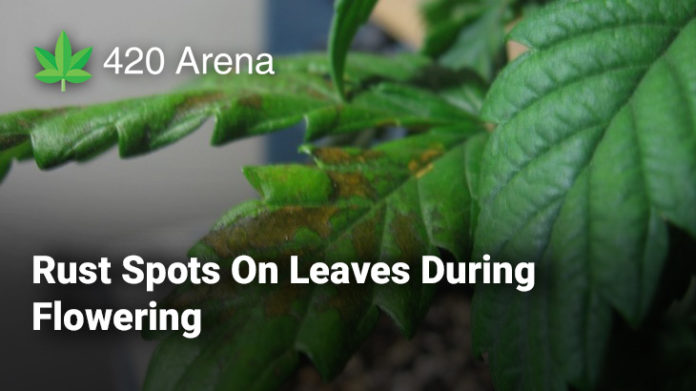

![How to Make a DIY Bubble Cloner [Complete Guide] How to Make a DIY Bubble Cloner](https://420arena.com/wp-content/uploads/2021/02/How-to-Make-a-DIY-Bubble-Cloner-218x150.jpg)





